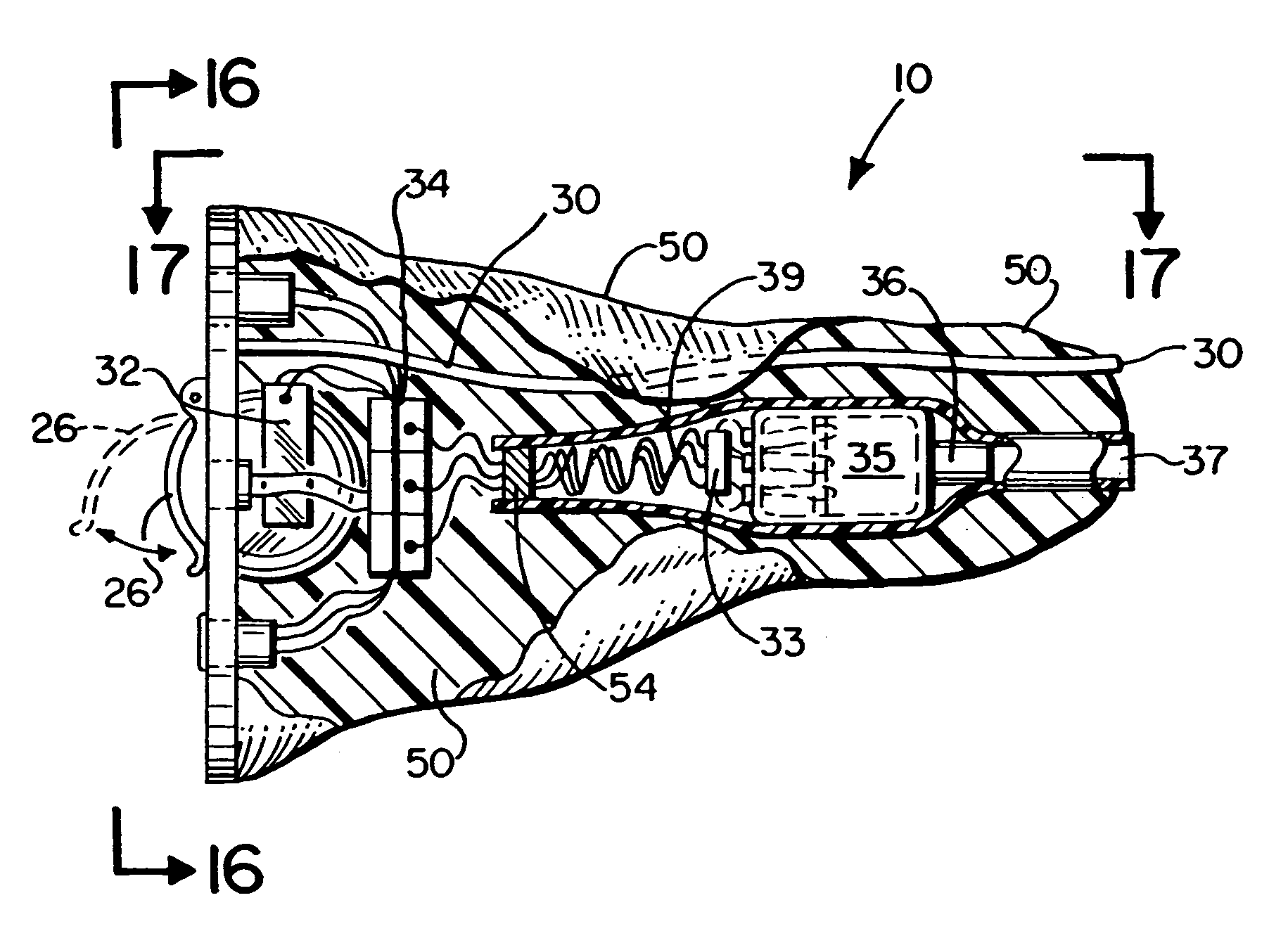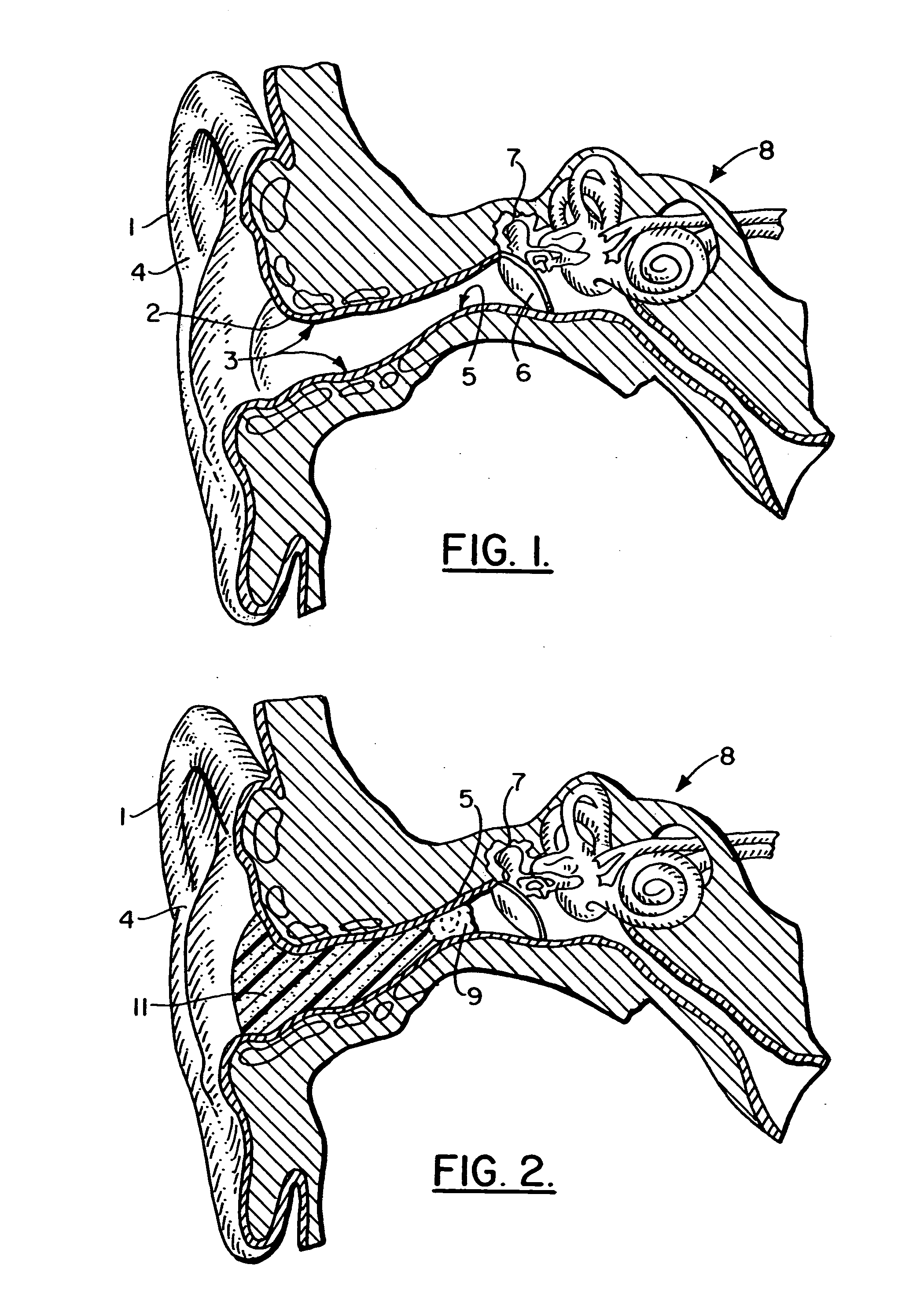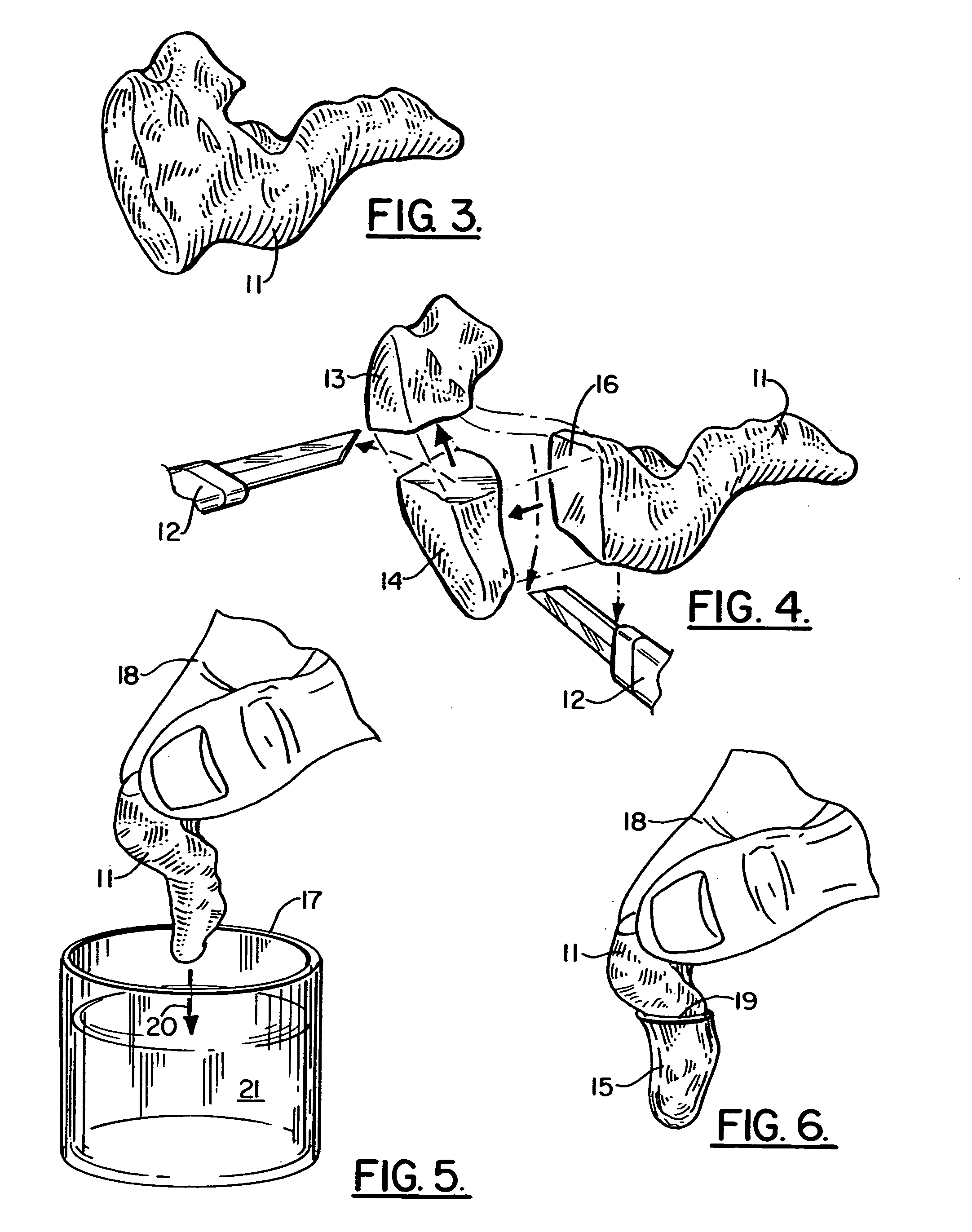Soft hearing aid with stainless steel wire
a hearing aid and stainless steel technology, applied in the field of hearing aids, can solve the problems of not fully achieving the expectations, not fostering overall market growth, and less than optimum fidelity of frequency response, and achieve the effect of a wide range of gain
- Summary
- Abstract
- Description
- Claims
- Application Information
AI Technical Summary
Benefits of technology
Problems solved by technology
Method used
Image
Examples
Embodiment Construction
[0089]FIGS. 1 and 2 show a user's ear 1 and anatomical parts of the ear. In FIG. 1 there can be seen the external auditory canal 2, ear canal wall 3, auricle 4, isthmus 5, tympanic membrane 6, middle ear 7 and inner ear 8. In FIG. 2 a dam 9 such as a cotton dam or otoblock dam is positioned at the isthmus 5. The dam 9 is used as a first step of the preferred method of the present invention wherein a form portion 11 or impression material is formed of silicone, methylmethacrylate or alginate. The form 11 is formed in between dam 9 and auricle 4 as shown in FIG. 2.
[0090] During the method step of making form 11, the form 11 conforms to all of the curvatures of the ear canal 3 so that an accurate form 11 is provided for making a female mold.
[0091] The female mold 15 is shown in FIGS. 6 and 9-12. In FIGS. 3 and 4, the form 11 is shown after being removed from the ear 1 (FIG. 3) and during a cutting of the form 11 using knives 12 to cut excess material that is designated as 13, 14 in F...
PUM
| Property | Measurement | Unit |
|---|---|---|
| diameter | aaaaa | aaaaa |
| diameter | aaaaa | aaaaa |
| diameter | aaaaa | aaaaa |
Abstract
Description
Claims
Application Information
 Login to View More
Login to View More - R&D
- Intellectual Property
- Life Sciences
- Materials
- Tech Scout
- Unparalleled Data Quality
- Higher Quality Content
- 60% Fewer Hallucinations
Browse by: Latest US Patents, China's latest patents, Technical Efficacy Thesaurus, Application Domain, Technology Topic, Popular Technical Reports.
© 2025 PatSnap. All rights reserved.Legal|Privacy policy|Modern Slavery Act Transparency Statement|Sitemap|About US| Contact US: help@patsnap.com



